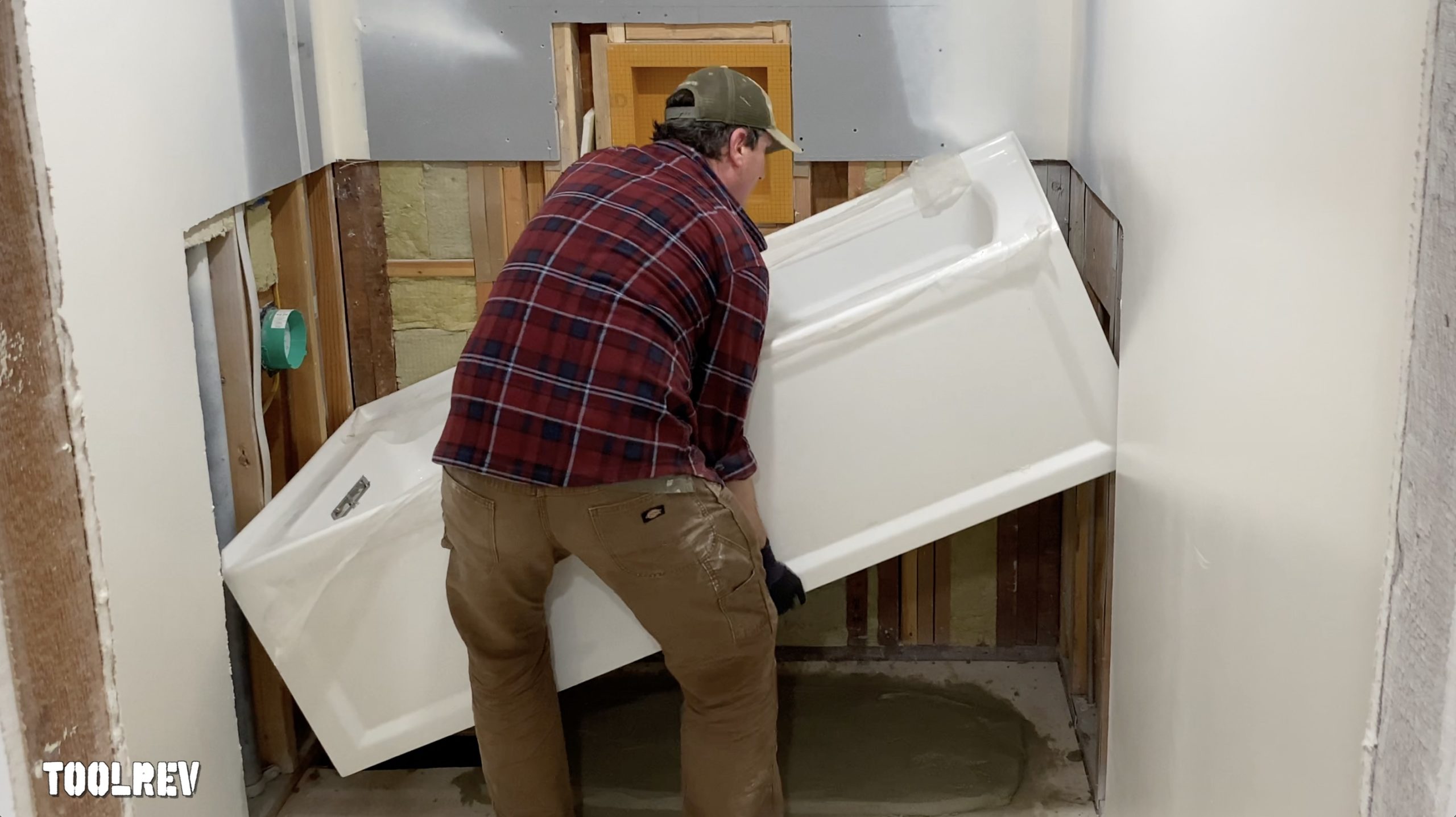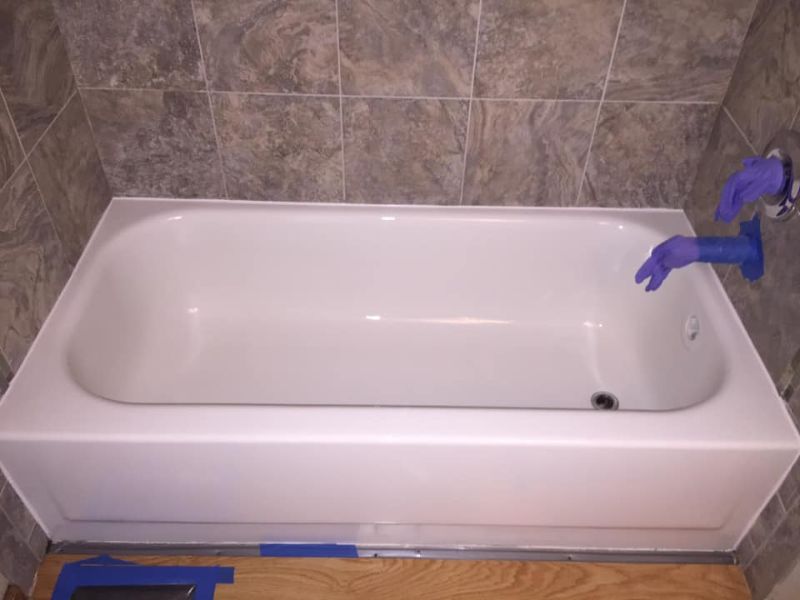The article author is making several good annotation about How to Install a Bathtub overall in this post below.

Mounting a bath tub isn't exactly rocket science, however it does need strong plumbing, woodworking, and sometimes, tiling skills. Replacing an old bathtub with a new one is likewise a reasonably difficult project. If the old tub is readily available, the task can relocate speedily; if you have to open up a wall to remove the old tub as well as place the brand-new bath tub, the task is much harder. In either case, the job is within a house handyman's skills, although you will certainly require an assistant to vacate the old bathtub as well as embeded in the new one. Make sure you have qualified yourself for the job as well as are comfortable trying it. Instead of working with a specialist to take over a halfway-completed job, it is much better to think about using one prior to you begin. Possibilities are you may need an expert plumber to make tube connections.
This post will aid you install a new bathtub in your restroom if you have actually currently gotten a new tub as well as don't need to alter the plan of your previous water system pipes.
Your tools as well as material checklist ought to make up the following:
Preparing for the Installation
Firstly, the supporting frame provided with the bathroom needs to be fitted (if called for) according to the maker's instructions. Next, fit the faucets or mixer to the bath tub. When fitting the faucet block, it is necessary to make certain that if the tap comes with a plastic washing machine, it is fitted in between the bathroom as well as the taps. On a plastic bathroom, it is likewise practical to fit a supporting plate under the faucets system to avoid strain on the bath tub.
Fit the versatile tap connectors to the bottom of both taps using 2 nuts and also olives (in some cases supplied with the bathtub). Fit the plug-hole electrical outlet by smearing mastic filler round the sink outlet opening, and then pass the electrical outlet with the hole in the bath. Utilize the nut supplied by the supplier to fit the plug-hole. Take a look at the plug-hole outlet for an inlet on the side for the overflow pipeline.
Next, fit the end of the flexible overflow pipe to the overflow electrical outlet. Afterwards, screw the pipe to the overflow face which should be fitted inside the bathroom. Make certain you use all of the provided washers.
Connect the catch to the bottom of the waste electrical outlet on the bathtub by winding the string of the waste electrical outlet with silicone mastic or PTFE tape, as well as screw on the catch to the electrical outlet. Link the bottom of the overflow tube in a comparable manner.The bath should currently be ready to be fitted in its last setting.
Removing Old Touches
If you need to change old faucets with new ones as a part of your installment, then the first thing you should do is separate the water system. After doing so, turn on the faucets to drain any water continuing to be in the system. The process of getting rid of the existing faucets can be fairly troublesome due to the limited access that is usually the case.
Make use of a basin wrench (crowsfoot spanner) or a faucet tool to reverse the nut that links the supply pipelines to the taps. Have a cloth prepared for the remaining water that will originate from the pipes. When the supply pipelines have been gotten rid of, utilize the very same tool to loosen the nut that holds the taps onto the bath/basin. You will certainly need to quit the solitary taps from transforming during this procedure. Once the taps have actually been eliminated, the holes in the bath/basin will certainly have to be cleaned up of any old securing substance.
Before going on to fit the brand-new taps, contrast the pipe connections on the old faucets to the new faucets. If the old taps are longer than the new taps, after that a shank adapter is required for the new faucets to fit.
Installing the Tub
Using both wooden boards under its feet, put the bath tub in the required setting. The wood boards are useful in uniformly spreading out the weight of the bathtub over the location of the boards as opposed to focusing all the weight onto four tiny points.
The next objective is to guarantee that the bathtub is leveled all round. This can be accomplished by examining the level and changing the feet on the bath tub until the spirit level checks out degree.
To mount taps, fit the bottom of the outermost adaptable tap connector to the proper supply pipeline by making a compression sign up with; then do the exact same for the other faucet.
Switch on the supply of water as well as check all joints as well as brand-new pipework for leaks and tighten them if needed. Load the bath tub as well as also check the overflow outlet as well as the typical electrical outlet for leakages.
Ultimately, fix the bath paneling as explained in the producer's user's manual. Tiling and also sealing around the bathtub ought to wait until the bathtub has been utilized a minimum of once as this will settle it into its final setting.
Fitting New Taps
If the tails of the new taps are plastic, then you will need a plastic connector to prevent damage to the thread. One end of the connector fits on the plastic tail of the faucet and also the various other end offers a connection to the existing supply pipes.
If you need to fit a monobloc, then you will require reducing couplers, which links the 10mm pipe of the monobloc to the basic 15mm supply pipe.
Next, position the tap in the placing opening in the bath/basin making certain that the washing machines remain in location between the tap and the sink. Secure the tap in place with the manufacturer provided backnut. Once the faucet is firmly in position, the supply pipes can be linked to the tails of the taps. The taps can either be attached by using corrugated copper piping or with regular faucet ports. The former type needs to be attached to the faucet ends first, tightening up only by hand. The supply pipes can later on be linked to the other end. Tighten up both ends with a spanner after both ends have been connected.
Tiling Around the Bathtub
In the location where the bath fulfills the ceramic tile, it is required to seal the accompanies a silicone rubber caulking. This is necessary as the installation can relocate enough to crack an inflexible seal, triggering the water to permeate the wall surface in between the bath and also the tiling, bring about issues with dampness as well as possible leakages to the ceiling below.
You can choose from a selection of coloured sealants to blend in your components as well as installations. They are marketed in tubes and cartridges, and also can sealing voids approximately a size of 3mm (1/8 inch). If you have a larger void to fill up, you can load it with twists of drenched newspaper or soft rope. Bear in mind to always fill the tub with water before sealing, to permit the motion experienced when the bathtub is in usage. The sealant can crack rather early if you do not think about this motion prior to sealing.
Alternatively, ceramic coving or quadrant ceramic tiles can be used to border the bath or shower tray. Plastic strips of coving, which are easy to use and reduce to dimension, are likewise conveniently offered on the marketplace. It is advisable to fit the ceramic tiles using waterproof or water resistant glue as well as cement.
Bathtub Installation
How Important Is A Bathtub To Your Home?
High-quality baths, showers, and other bathroom updates are necessary when considering a smart investment in your home. It’s a room that you go to every day and one that is constantly being used by guests.The bathroom is one of the top trafficked rooms in a home and also one of the most valuable in terms of home resale.
Install Piping Before Tub
You will be using your existing drain and waste vent system, but pipes required include the hot and cold water supply lines and a pipe leading to a shower head. A mixing valve and shower head are also needed. Air chambers may be required.
Position the Tub
Lower the tub into place so that the continuous flange fits against the wall studs and rests on 1’x4' or 2’x4' supports. Anchor the tub to the enclosure with nails or screws inserted through the flanges into the studs.
NOTE: Remember, bathtubs and shower stalls may require support framing. A bathtub filled with water is extremely heavy, so check building codes and framing support before installing the tub.
Assemble Drain Connections
Assemble the bathtub drain connections by connecting the tub overflow with the tub drain above the trap, not beyond it. The trap will have a compression fitting that screws over the arm of the overflow assembly.
Place a Pipe For the Shower Head
First, locate a brass female threaded winged fitting and attach it to a framing support via a screw or a nail. Then run a pipe up the wall for the shower head. Sweat or solder the other side of the brass fitting to the top of the pipe.
Attaching Hot and Cold Water Lines
Attach your water lines for both hot and cold by sweating these directly into the hot and cold ports of the mixing valve. The mixing valve will be how water enters the tub’s system, not by the pipes themselves.
Install the Spout
Extend a piece of 1/2 inch pipe, or whichever length is specified in the manufacturer’s instructions, for the tub spout. Sweat on a male threaded fitting at the end of the pipe or use a brass nipple of the proper length and a 1/2 inch cap.
NOTE: At this point you should have your rough-in plumbing work inspected before proceeding further.
Check For Leaks
Restore the water pressure and check the drain connection and the supply pipes for any sign of leaking.
estore the Bathroom Wall
Replace the wall with moisture-resistant drywall as a base for your wall covering. Seal the joints between the wall and your new tub with silicone caulk as protection against water seepage.
https://www.berkeys.com/2016/12/02/bathtub-installation-dallas/

I am very interested by Installing A Bathtub and I'm hoping you appreciated the blog posting. Liked our entry? Please share it. Help somebody else discover it. Thanks for taking the time to read it.
Get An Estimate